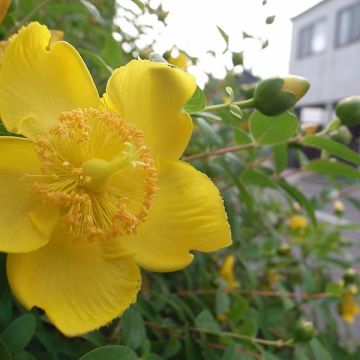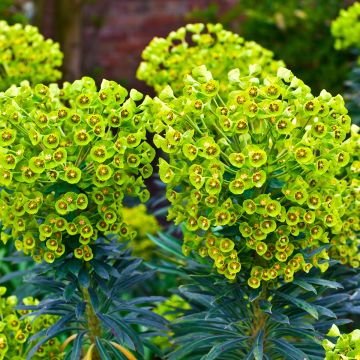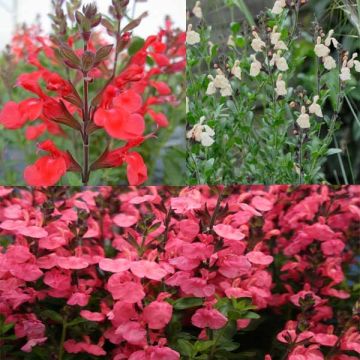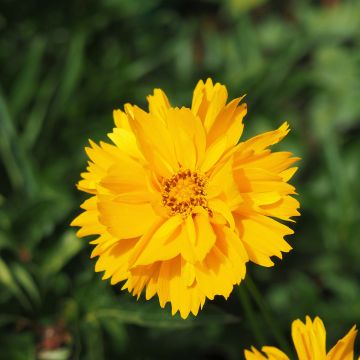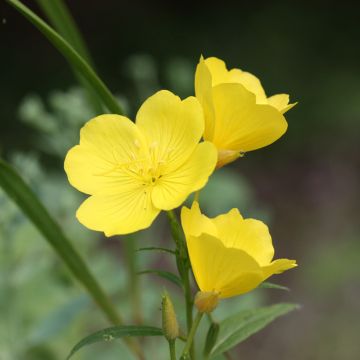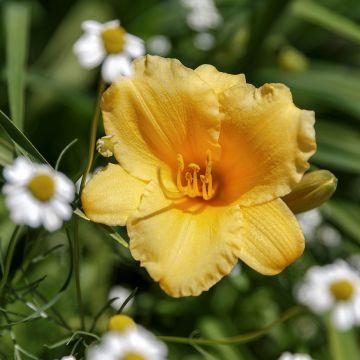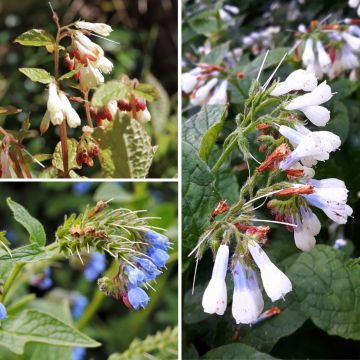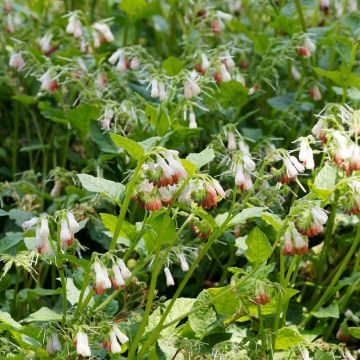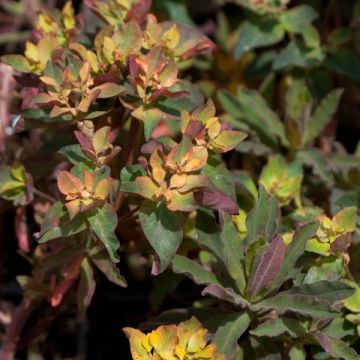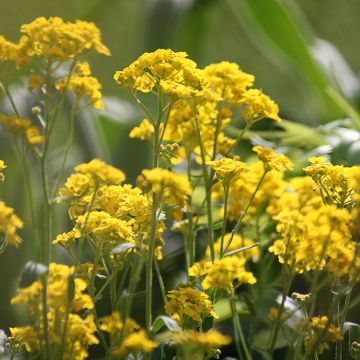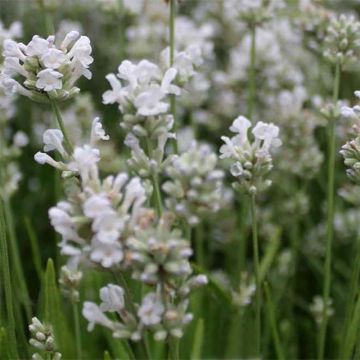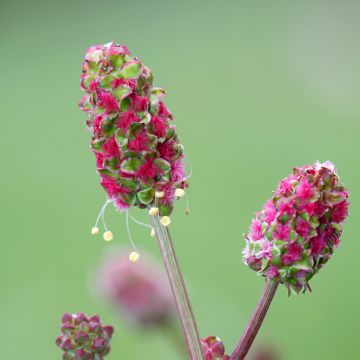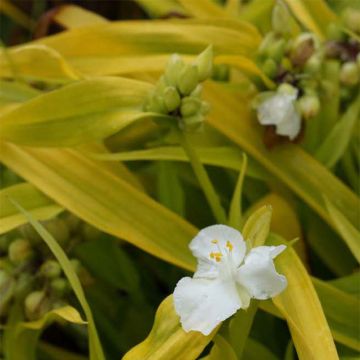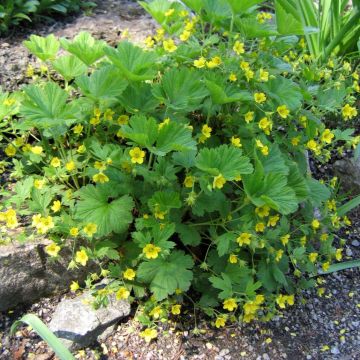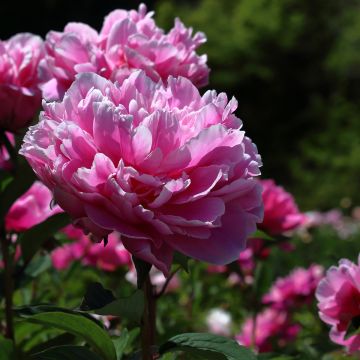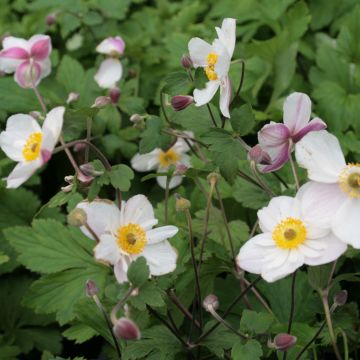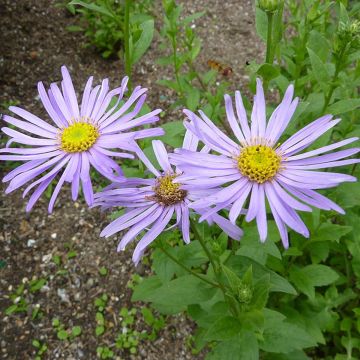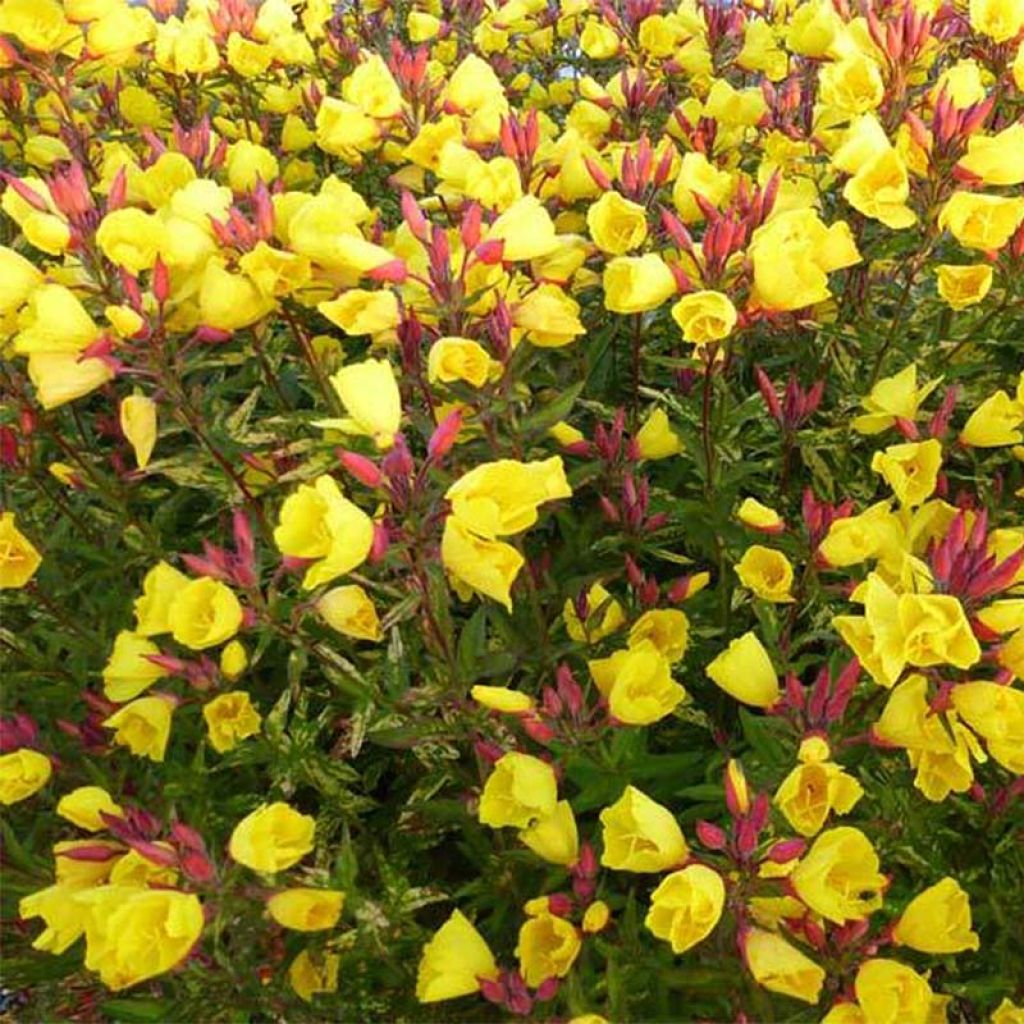

Oenothera fruticosa Camel - Evening Primrose
Oenothera fruticosa Camel - Evening Primrose
Oenothera fruticosa Camel
Narrowleaf Evening Primrose, Sundrops, Southern Sundrops
Young plants arrived in good condition but these Evening Primroses showed no vigour, despite suitable soil and location. Dead in winter.
Fulvia, 20/10/2021
Why not try an alternative variety in stock?
View all →This plant carries a 12 months recovery warranty
More information
We guarantee the quality of our plants for a full growing cycle, and will replace at our expense any plant that fails to recover under normal climatic and planting conditions.
From €5.90 for pickup delivery and €6.90 for home delivery
Express home delivery from €8.90.

Does this plant fit my garden?
Set up your Plantfit profile →
Description
Oenothera fruticosa Camel is a medium-sized perennial with variegated yellow foliage and reddish, branching stems bearing red flower buds and beautiful golden yellow flowers throughout the summer. It is a sun-loving plant that thrives in ordinary soil and is perfectly hardy, making it an essential choice for wild and natural gardens!
Oenothera fruticosa, also known as Oenothera linearis or Linear-leaved Evening Primrose, is a species native to eastern North America and belongs to the Onagraceae family. The Camel variety is an upright perennial with a rosette of basal leaves above which hairy, branching stems tinted with red rise. These stems bear narrow, oval, toothed leaves 5 to 12 cm (2 to 5in) long. The unique feature of this cultivar is its deciduous medium green foliage marbled with yellow, which contrasts beautifully with the red stems and flower buds while harmonizing with the bright yellow flowering. This Narrow-leaved Evening Primrose reaches a height of 60 cm (24in) with a spread of 40 cm (16in). From June to September, clusters of cup-shaped flowers ranging from 2 to 5 cm (1 to 2in) in diameter, bloom in dark yellow. This Evening Primrose is a nectar-rich plant that attracts numerous pollinating insects.
This Evening Primrose is a sun-loving perennial plant that thrives in moderately fertile, well-drained soil. It is low-maintenance, undemanding, and very easy to grow, making it the perfect addition to wild and natural gardens. With brightly variegated foliage, reddish stems, and flower buds, and long-lasting vibrant yellow flowers, it will be ideal for rockeries or borders, on slopes, or grown in containers on a terrace or balcony. Pairing this golden yellow-flowered Evening Primrose with perennial plants that have blue summer flowers will create a stunning effect. It will be the perfect companion for Agapanthus, Lavenders, Campanulas, Blue Thistles, Nepetas, and Scabious. It can also be combined with Perovskia, California Lilac, or Althaea.
Report an error about the product description
Oenothera fruticosa Camel - Evening Primrose in pictures
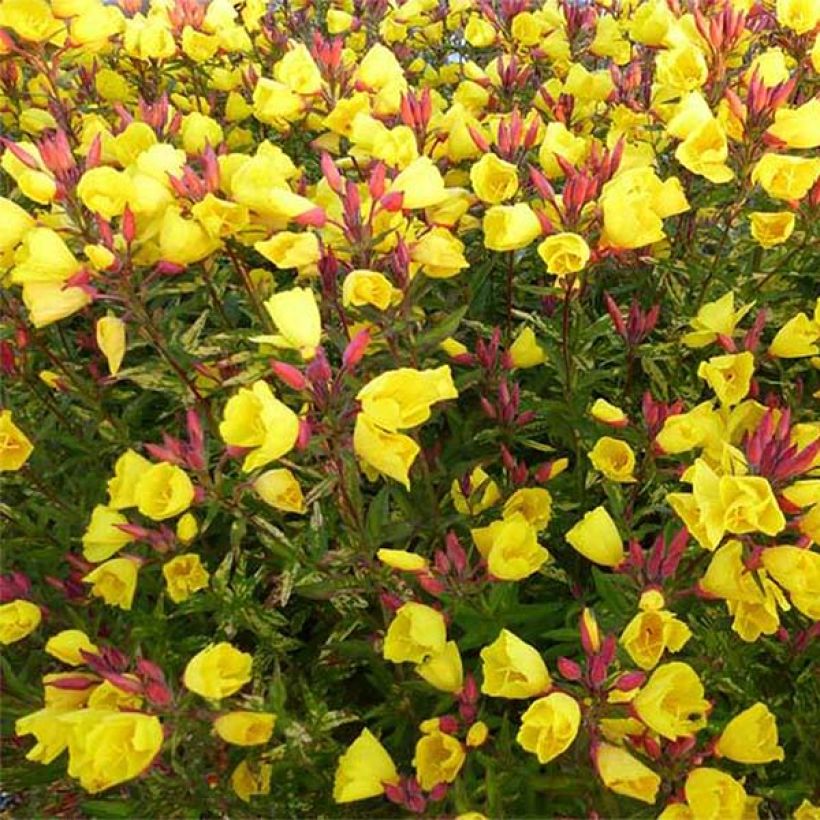

Flowering
Foliage
Plant habit
Botanical data
Oenothera
fruticosa
Camel
Onagracées
Narrowleaf Evening Primrose, Sundrops, Southern Sundrops
Cultivar or hybrid
Other Perennials A to Z
Planting and care
Oenothera fruticosa Camel is easy, undemanding, and hardy. This variegated Evening Primrose appreciates sunny exposures and moderately rich, not too dry to moist, well-drained soil. Once well established, it will tolerate drought. Planting should be done in spring, once all risk of frost is passed. Divide the clumps every three years to keep the plants flowering well. Remove faded flowers as they appear to prolong flowering and cut back the clump to ground level in October or November. Evening Primroses is very disease-resistant but does not tolerate excess humidity and may show signs of root rot in heavy and wet soil. In heavy and poorly drained soil, improve drainage with coarse sand and compost.
Planting period
Intended location
Care
-
, onOrder confirmed
Reply from on Promesse de fleurs
Haven't found what you were looking for?
Hardiness is the lowest winter temperature a plant can endure without suffering serious damage or even dying. However, hardiness is affected by location (a sheltered area, such as a patio), protection (winter cover) and soil type (hardiness is improved by well-drained soil).

Photo Sharing Terms & Conditions
In order to encourage gardeners to interact and share their experiences, Promesse de fleurs offers various media enabling content to be uploaded onto its Site - in particular via the ‘Photo sharing’ module.
The User agrees to refrain from:
- Posting any content that is illegal, prejudicial, insulting, racist, inciteful to hatred, revisionist, contrary to public decency, that infringes on privacy or on the privacy rights of third parties, in particular the publicity rights of persons and goods, intellectual property rights, or the right to privacy.
- Submitting content on behalf of a third party;
- Impersonate the identity of a third party and/or publish any personal information about a third party;
In general, the User undertakes to refrain from any unethical behaviour.
All Content (in particular text, comments, files, images, photos, videos, creative works, etc.), which may be subject to property or intellectual property rights, image or other private rights, shall remain the property of the User, subject to the limited rights granted by the terms of the licence granted by Promesse de fleurs as stated below. Users are at liberty to publish or not to publish such Content on the Site, notably via the ‘Photo Sharing’ facility, and accept that this Content shall be made public and freely accessible, notably on the Internet.
Users further acknowledge, undertake to have ,and guarantee that they hold all necessary rights and permissions to publish such material on the Site, in particular with regard to the legislation in force pertaining to any privacy, property, intellectual property, image, or contractual rights, or rights of any other nature. By publishing such Content on the Site, Users acknowledge accepting full liability as publishers of the Content within the meaning of the law, and grant Promesse de fleurs, free of charge, an inclusive, worldwide licence for the said Content for the entire duration of its publication, including all reproduction, representation, up/downloading, displaying, performing, transmission, and storage rights.
Users also grant permission for their name to be linked to the Content and accept that this link may not always be made available.
By engaging in posting material, Users consent to their Content becoming automatically accessible on the Internet, in particular on other sites and/or blogs and/or web pages of the Promesse de fleurs site, including in particular social pages and the Promesse de fleurs catalogue.
Users may secure the removal of entrusted content free of charge by issuing a simple request via our contact form.
The flowering period indicated on our website applies to countries and regions located in USDA zone 8 (France, the United Kingdom, Ireland, the Netherlands, etc.)
It will vary according to where you live:
- In zones 9 to 10 (Italy, Spain, Greece, etc.), flowering will occur about 2 to 4 weeks earlier.
- In zones 6 to 7 (Germany, Poland, Slovenia, and lower mountainous regions), flowering will be delayed by 2 to 3 weeks.
- In zone 5 (Central Europe, Scandinavia), blooming will be delayed by 3 to 5 weeks.
In temperate climates, pruning of spring-flowering shrubs (forsythia, spireas, etc.) should be done just after flowering.
Pruning of summer-flowering shrubs (Indian Lilac, Perovskia, etc.) can be done in winter or spring.
In cold regions as well as with frost-sensitive plants, avoid pruning too early when severe frosts may still occur.
The planting period indicated on our website applies to countries and regions located in USDA zone 8 (France, United Kingdom, Ireland, Netherlands).
It will vary according to where you live:
- In Mediterranean zones (Marseille, Madrid, Milan, etc.), autumn and winter are the best planting periods.
- In continental zones (Strasbourg, Munich, Vienna, etc.), delay planting by 2 to 3 weeks in spring and bring it forward by 2 to 4 weeks in autumn.
- In mountainous regions (the Alps, Pyrenees, Carpathians, etc.), it is best to plant in late spring (May-June) or late summer (August-September).
The harvesting period indicated on our website applies to countries and regions in USDA zone 8 (France, England, Ireland, the Netherlands).
In colder areas (Scandinavia, Poland, Austria...) fruit and vegetable harvests are likely to be delayed by 3-4 weeks.
In warmer areas (Italy, Spain, Greece, etc.), harvesting will probably take place earlier, depending on weather conditions.
The sowing periods indicated on our website apply to countries and regions within USDA Zone 8 (France, UK, Ireland, Netherlands).
In colder areas (Scandinavia, Poland, Austria...), delay any outdoor sowing by 3-4 weeks, or sow under glass.
In warmer climes (Italy, Spain, Greece, etc.), bring outdoor sowing forward by a few weeks.

































